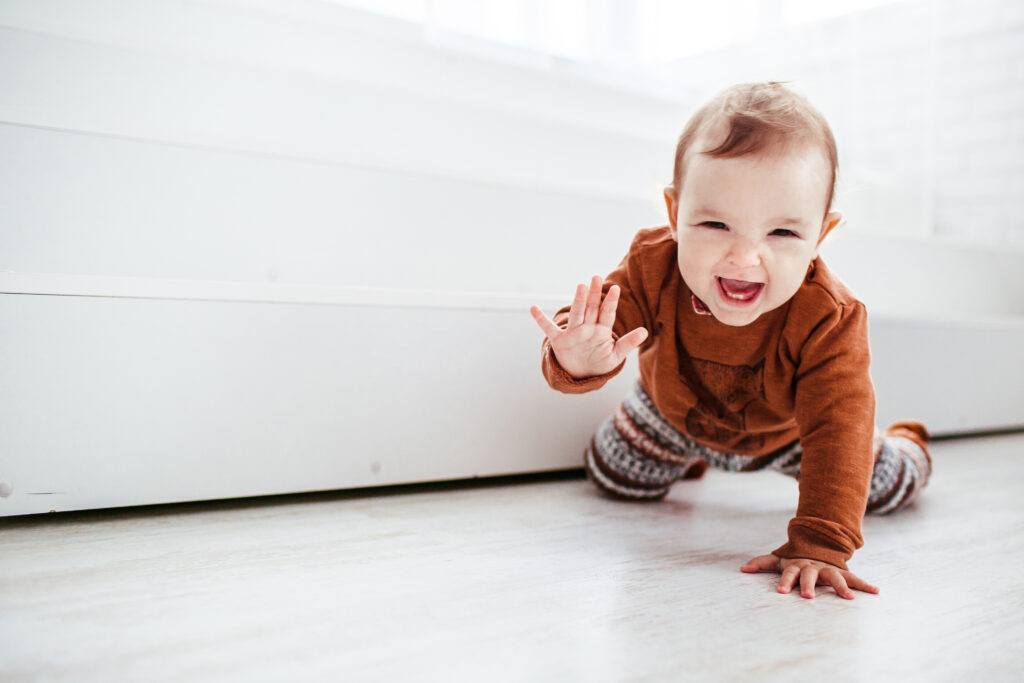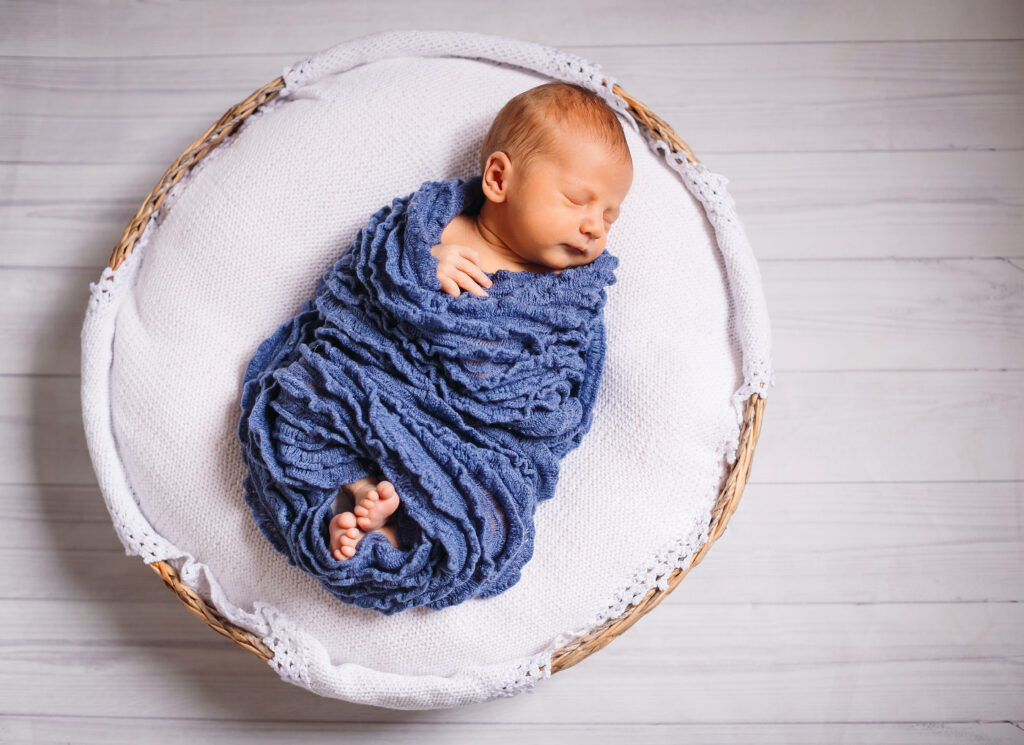How to stimulate eyesight in a baby who’s a few months old?
With infants, their sense of sight is unusually sensitive to any external stimuli, and it develops dynamically. Very young babies have a peripheral vision only – which means that they can only see things placed at the edges of their field of vision. After about two months, central vision is activated and the infant can see objects placed in the center of their field of vision. They do not perceive depth; they are not able to focus their attention on moving persons or things. Their attention is drawn by clearly defined objects and designs with large patterns. They cannot differentiate colors, and that is why, during this period, black and white contrast cards are best for doing sight exercises.
Until they are three months old, cards or posters with black and white patterns (e.g. geometric) are ideal. You can hang them by the child’s bed or by the changing table – where your child looks when having its nappy changed. It is recommended to change the posters daily, so new and varied shapes are learned. An infant sees reasonably clearly at a distance of 20–30 centimeters, so you can hold a card in front of them when talking to them. Other objects (e.g. blanket, pillow) could also be black and white. Exercises with contrast cards will be helpful, e.g. black and white contrast cards.
2–3-month-old child: Reacts to colors, so color cards can be used as well as objects: balls, stuffed toys, etc. A poster or carousel with toys can be placed above the cradle as well.
When the child is over six months old, exercises, where the infant follows moving objects (differently: leading after moving objects), can be started.



Mobile devices and sight
In the 21st century we have a real “epidemic” of myopia caused by excessive usage of electronic devices (especially mobiles with small screens). This disorder escalates at puberty and is perpetuated in later years. The majority of people with myopia are teenagers – Generation Z kids cannot imagine functioning without their favourite gadget, which ensures steady contact with the “outside world”. “World” which stands for the internet, where the youth is fascinated by the life of peers, idols, etc..
Which eyesight irregularities are most prevalent in children of school age?
We very often see children with myopia – lazy eye – at our clinic. According to statistics, a quarter of all teenagers are myopic. More and more children between eight and 12 years old wear corrective glasses (minus). The prevalence of small electronic devices – smartphones, tablets, e-readers and PCs with small screens have increased the number of children with sight disorders. This is a result of bad habits, e.g. too much time spent in front of the TV or laptop, reading with insufficient light, etc.
Other problems within the eye area in young ones are: conjunctivitis, accommodative spasm, eye tiredness (causing headaches), and visual system spasm. Accompanying symptoms are: tension (tiredness) around the neck and arm muscles and hypererethism. Please see our post: “The influence of stress on sight” on our blog.
More complex disorders requiring specialized eye treatment: strabismus and amblyopia. At our foundation’s clinic, strabismus therapy is provided by certified orthoptists.
Infants and making an ophthalmologist appointment
A child should be enrolled for their first ophthalmologist appointment in their first months of life. A medical device which enables early diagnosis of sight disorders in infants is the autorefractometer along with the keratometer. Our foundation is equipped with these devices, and using them, we examine many young children (sight tests for infants).

Well-nourished eyes
Eyesight is supported by:
VITAMIN C – which takes part in collagen synthesis and is responsible for the stability of the eye’s blood vessels. Insufficient vitamin C can cause fragility in the eye’s blood vessels, which may lead to small hemorrhages and subconjunctival effusions, which impair sight.
VITAMIN E (the “youth vitamin”) – this is a strong antioxidant which is beneficial to eyesight. It is found in cooking oils (among others, in sunflower oil), sunflower seeds, pumpkin, and sesame.
PROVITAMIN A – BETA-CAROTENE (β-carotene) – this is also a strong antioxidant which fights free radicals damaging sight. An insufficient amount of this vitamin in the diet causes so-called night blindness and a chronic deficit can result in dry eye syndrome.
Provitamin A plays a significant role in helping the retina receive visual signals, as it contains rhodopsin (visual purple) – a light-sensitive dye which is located in the conjunctiva rods.
IMPORTANT! It is not recommended to have too many carrots in your diet as they grow in soil and may contain small quantities of heavy metals which are harmful to the kidneys. This doesn’t mean however that you should avoid them! Five young carrots a week will not do any harm to your child. Young carrots are the best, and of course, they taste fresh and slightly sweet. Don’t buy carrots which have been lying around for a while or which have been kept in too high a temperature, as they may be no good.
Selenium – which takes part in converting Vitamin A into rhodopsin – a light sensitive dye which helps us see after dusk and in low light.
In spring and summer, fresh vegetables and fruit are a source of ingredients which are mutually supportive and strengthen antioxidative activity. In order to ensure children get enough vitamins and minerals, give them fruit-vegetable cocktails and salads everyday.


Tasty healthy morning breakfast made of milk and porridge with nuts, apples and bananas





Photos: www.freepik.com

Najnowsze komentarze